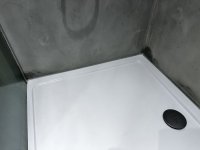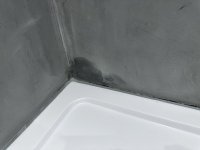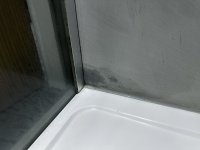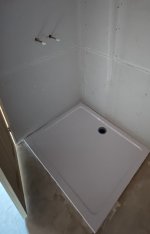Hi all,
2 years ago we had a dormer installed on our house which had an en-suite bathroom with 2 walls done in microcement.
Only recently has 2 small patches appeared around the silicone sealant area of the tray where it looks like water has been absorbed. I’m completely blaming the missus for excessive scrubbing of the sealant which has allowed water to penetrate.
Anyway, is this possible to save? I’m happy to remove and re-seal around the tray, but I fear it would not stick to the cement in its current state.
I’ve also attached pictures of how it looked pre cement as I wanted to document the build as it was done. Now that I know a little more I know that they didn’t use adequate plasterboard, but this problems seems to stem from broken sealant around the tray.
Any advice welcome, thanks
Chris
2 years ago we had a dormer installed on our house which had an en-suite bathroom with 2 walls done in microcement.
Only recently has 2 small patches appeared around the silicone sealant area of the tray where it looks like water has been absorbed. I’m completely blaming the missus for excessive scrubbing of the sealant which has allowed water to penetrate.
Anyway, is this possible to save? I’m happy to remove and re-seal around the tray, but I fear it would not stick to the cement in its current state.
I’ve also attached pictures of how it looked pre cement as I wanted to document the build as it was done. Now that I know a little more I know that they didn’t use adequate plasterboard, but this problems seems to stem from broken sealant around the tray.
Any advice welcome, thanks
Chris





